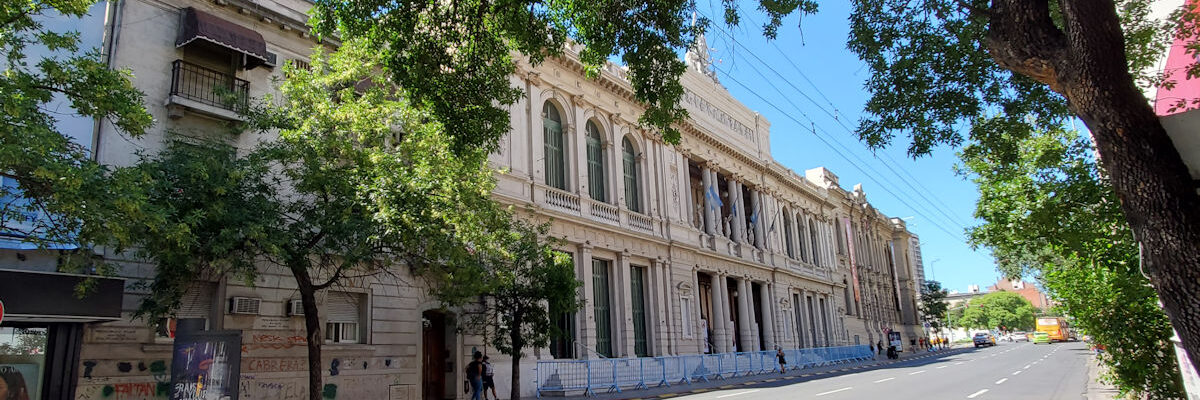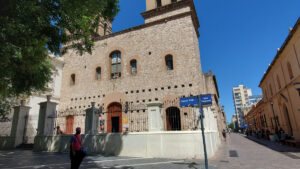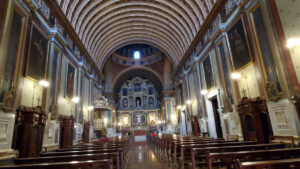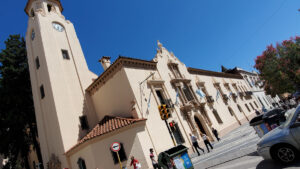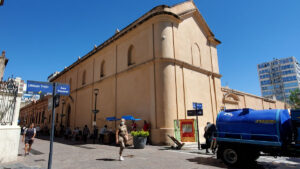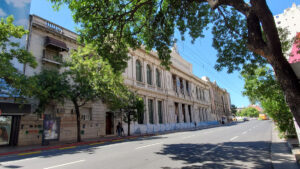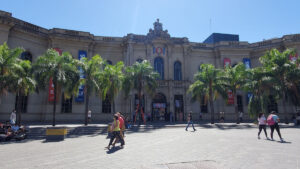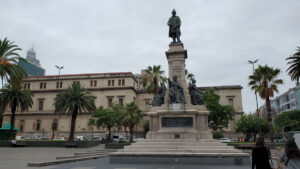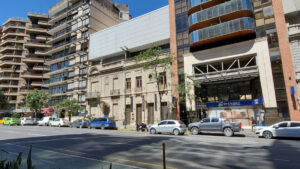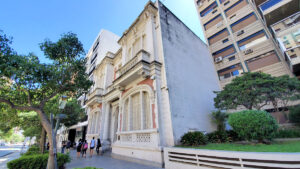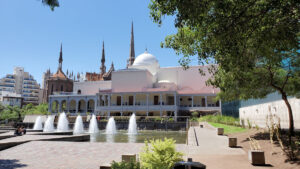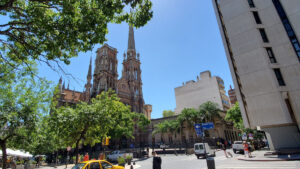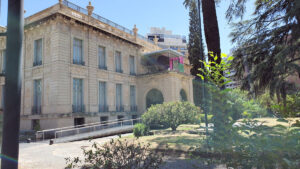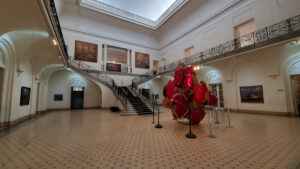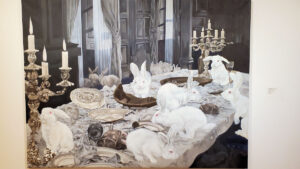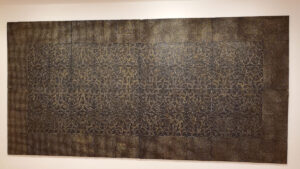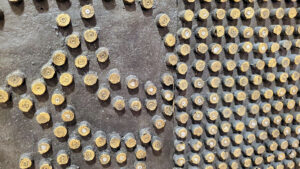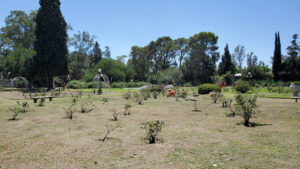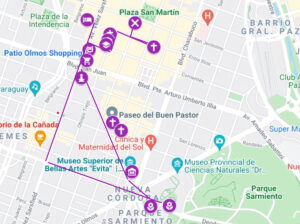Picking up from where I left off yesterday….
The first thing I did was completely missed one church/college, the College of the Immaculada, and its associated Church of St. Francis of Assisi. It only got a single sentence in the text in the middle of a paragraph about St. Teresa where I left off yesterday, and…
… the Iglesia de la Compania de Jesus (though in the guidebook, they just list it as the Jesus church). Noted as being the “Latin cross” style, with a hemispheric ceiling, and a “serious and mystical aura”. This was the only church I found open to simply walk into during the whole tour, and I’m kind of glad it was this one, as it’s a rather cool looking place.
In the guide, this was identified as the famed University of San Carlos, it now is, I gather, the law school for the National University in Córdoba. Founded in 1613, this was one of the first universities in the country.
And, right next door, the Colegio Nacional de Monserrat. Nothing is mentioned other than that it’s a modern colonial style building.
A short walk away, two neighboring historical buildings. At the time of the guide, the one dominating this photo was the Teatro Rivera Indarte, and it’s still a theater, but it’s been renamed as the Teatro del Libertador General San Martín. José Rivera Indarte was one of Argentina’s most famed poets and authors, and was born in Córdoba in 1814. That, at least to me, seems more fitting for a theater name than yet another edifice named after the much lauded liberating general. At the far end…
…what was at the time the Academia Provincial de Bellas Artes y Escuela Olmos, I gather considered one of the best schools of the arts in the era, is now the Patio Olmos, a shopping mall.
Directly in front of the mall is the Plaza Velez Sarsfield, named after Domacio Velez Sarsfield, a prominent lawyer and politician in Argentina in the 1800s. He was most noted for being the drafter of the Argentine Civil Code, basically the entire foundation of civil law in the country. It remained in force from when he wrote it in 1869 until recently, in 2015, when it was replaced by a modernized civil and commercial law code.
The next step is a seven or so block walk along Av. Velez Sarsfield, about which nothing is mentioned other than it is home to many stately mansions. Most of those are now gone, or have been converted other uses, with new facades. Only a few remain.
Not mentioned, because it didn’t exist until a few decades ago, the beautiful Paseo del Buen Pastor, a modern, but still imposing church, and its grounds.
Likewise, the massive, and seemingly old enough Iglesia de Sagrado Corazón de Jesus, but, on closer examination, it was built a few years after 1932, so wasn’t around when the guide was written.
At the far end of this stretch, what was at the time the Museo Provincial de Bellas Artes, the provincial fine arts museum (nicely bracketing the academy at the other end of the same stretch that is now a shopping mall), now the Museo Superior de Bellas Artes “Evita”, still the same museum, just now named after Eva Perón, and upgraded from provincial to superior. The museum was open, by appointment, which was easy enough to do – the city’s cultural office has an online app that you can make reservations to any of the open museums and other cultural events, including easy payment options.
The guide spends a bit of time on covering what’s in the galleries, none of which is accurate anymore. At the time it was a lot of period and earlier European art, and religious art. These days, it’s almost all modern art. Just a couple of pieces that caught my eye, because who doesn’t like bunnies at a dinner party, and then this interesting patterned piece that looked sort of like a middle eastern rug, but on close up examination turns out to be made from bullet shell casings… perhaps a commentary on the Middle East…?
The museum fronts onto the Plaza España and Parque Sarmiento. The plaza is ringed by apartment buildings and two other museums, neither of which was open at the time (one photography, one natural sciences). The day was turning blazing hot and humid, and I decided to forego a long walk through the park, which was the next series of instructions in the guide. I’m sure this sculpture to the Argentine bicentennial didn’t exist at the time, as it only happened seven years ago. Most of the walk was focused around the zoo, which appears to no longer exist, and…
…the rose garden, which is looking really damned sparse right now.
From this point, the tour basically doubled back all the way to where the two universities noted above are, and then headed west and north. I decided to take a lunch break and then get out of the sun back at the hotel. Next post will finish off the rest of this tour, and then I’ll hit you with some food!
